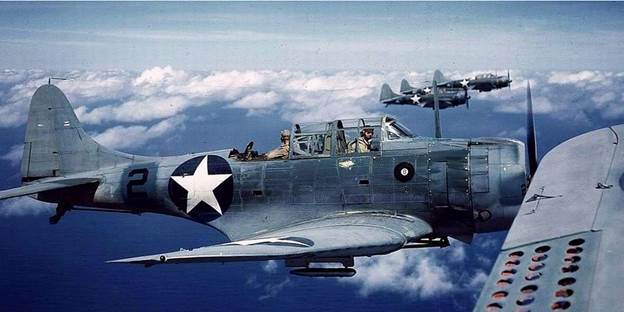Wild_Bill_Kelso
Senior Master Sergeant
- 3,231
- Mar 18, 2022
Now with the aid of Hindsight about 1/2 of the planes on that list were obsolete, out of production and being phased out during 1942. The US did not know this but since in at least two cases the replacements were in service very near the beginning of the year and hand writing was on the wall.
You often seem to present this kind of thing as some kind of unusual circumstances. I would argue that it was the normal state of things. To the contrary it's unusual and rather hard to find cases where all the fighting is being done with state of the art aircraft. In 1942 in particular, on both sides, fairly obsolescent or even completely obsolete types were found in action on all the major fronts. Certainly this was the case in the Pacific, in China, in the Med, and on the Russian Front.
It's inherent to the nature of industrialized warfare, IMO, that the best (usually though not always meaning most modern) aircraft go to the most critical parts of the front, to fly the most critical missions, but much of the rest of the Theater and needless to say those Theaters deemed of secondary or tertiary importance also get older types. For the simple reason that they are available, and an older aircraft is usually better than no aircraft when it comes to helping win the war.
In most cases in 1942 this also meant that the most effective front-line fighters were short range types (Spitfire I through V, Bf 109, Hurricane, P-39, Yak-1, MC.202) with a few medium ranged (Bf 110, F4F, Kittyhawk, Re. 2001) and the fairly rare long ranged types (A6M, Ki-43, Ki-45, P-38, Beaufighter)
The Japanese fighters were certainly an exception and had much longer range than any other front line single - engined fighter in 1942, but they had a lot of ground to cover and there weren't enough of them available.
So in Naval Combat, especially in the vast Pacific, there were still a lot of these secondary types fighting and encountering one another on a routine basis.
G3M and G4M for instance and the H6K and H8K for another.
Both older types were still around for a long time. H6K was still being used in 1944 and I think 45.
The E-13 lasted quite a bit longer, well into 1943 if not 1944?
The F1M also lasted quite a while but since it was short ranged it didn't often go out to play with aircraft carriers.
I don't think SBDs had any trouble with the E-13. All the E-13 pilot could really do if they saw an SBD scout was to hide in a cloud and maybe call on the radio for help. F1M were much scrappier, they did seem to encounter carrier aircraft, such as when the SBD scouts were locating IJN surface fleets. Part of the job of the F1M was to attack scouts and they did. They also tangled with long ranged land based bombers and flying boats.
IIRC many of the claims for SBDs were of these various types. The A6M2-N float plane zero was more of a challenge and they encountered those as well. But I think far too much emphasis gets put on ostensible SBD vs. A6M matchups.Both of the these planes actually present a bit of challenge for the SBD. They are a bit slower, max speed about 230mph for both so adjust for altitude.
However both have much lower wing loading than the SBD (and I am using the weight of a scout with 150 US gallons of fuel) and both will climb about as well as the SBD to 15-16,000ft.
SBD may climb a bit better at low altitude in low supercharger gear.
Not saying the SBD cannot win. It Will depend on circumstances and pilot skill. The SBD has got an edge but not a big one and if you are trying to shoot down snoopers you may want a bigger edge.
A big part of the job of a scout aircraft was to encounter and destroy enemy recon aircraft, enemy ASW aircraft, enemy transports and anything else the enemy had flying, and they did this pretty well. An SBD had a greater range than an F4F, even with a bomb. So they were the ones which actually most often encountered all this flying miscellanea. And it was very important to shoot them down, because when they spotted allied ships that often became a major problem.
SBDs also have a problem playing ersatz CAP. At least the early ones only carried 180 rounds per gun. Granted the Synchronized guns are kind of low fire rate but that is not enough for very many intercepts or attempts.
It's still more than a Sea Hurricane
I don't think the SBD was particularly good for the role as CAP against an escorted strike protected by first line fighters (i.e. Zeros), they used them in that role only out of desperation. But clearly they did do a vital job as a scout bomber flying much further out,
As 1942 progressed the Japanese aircraft that the SBD had an advantage over as an interceptor declined as a percentage of the likely targets. Carriers needed CAP aircraft that could engage a wider variety of targets, not just select ones.
I think you are failing to understand the operational reality, per my first paragraph.

